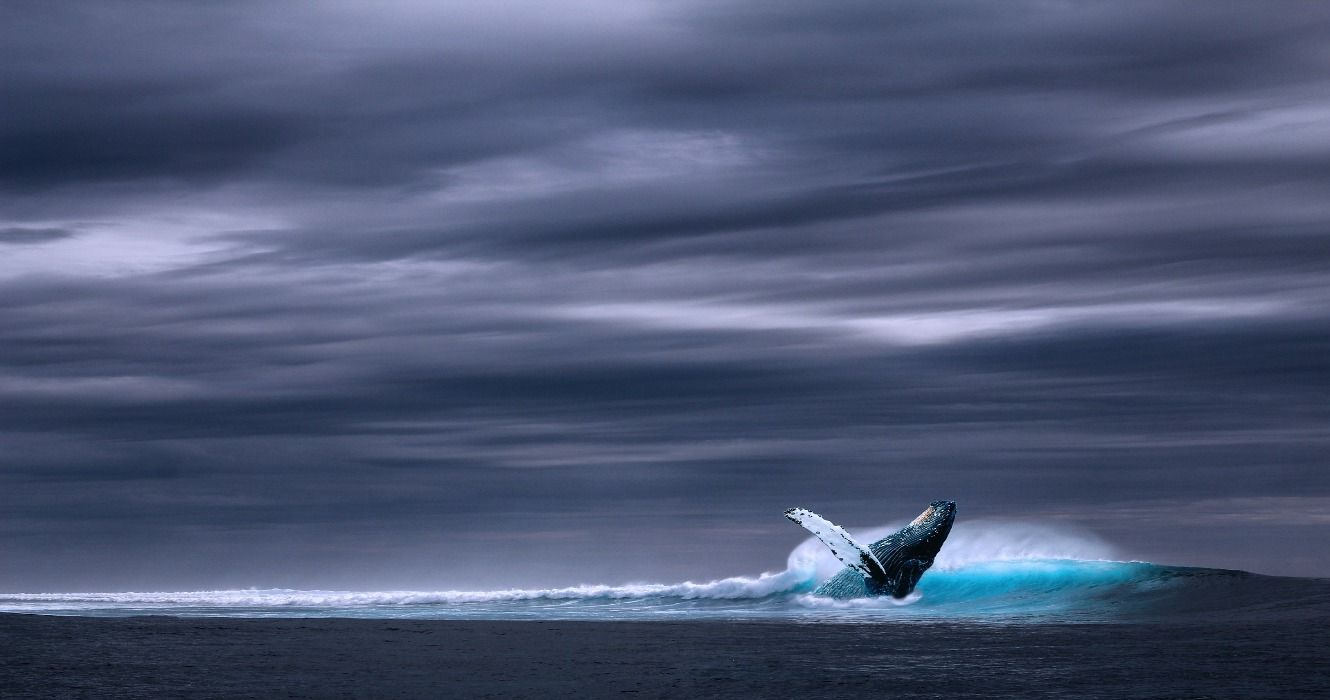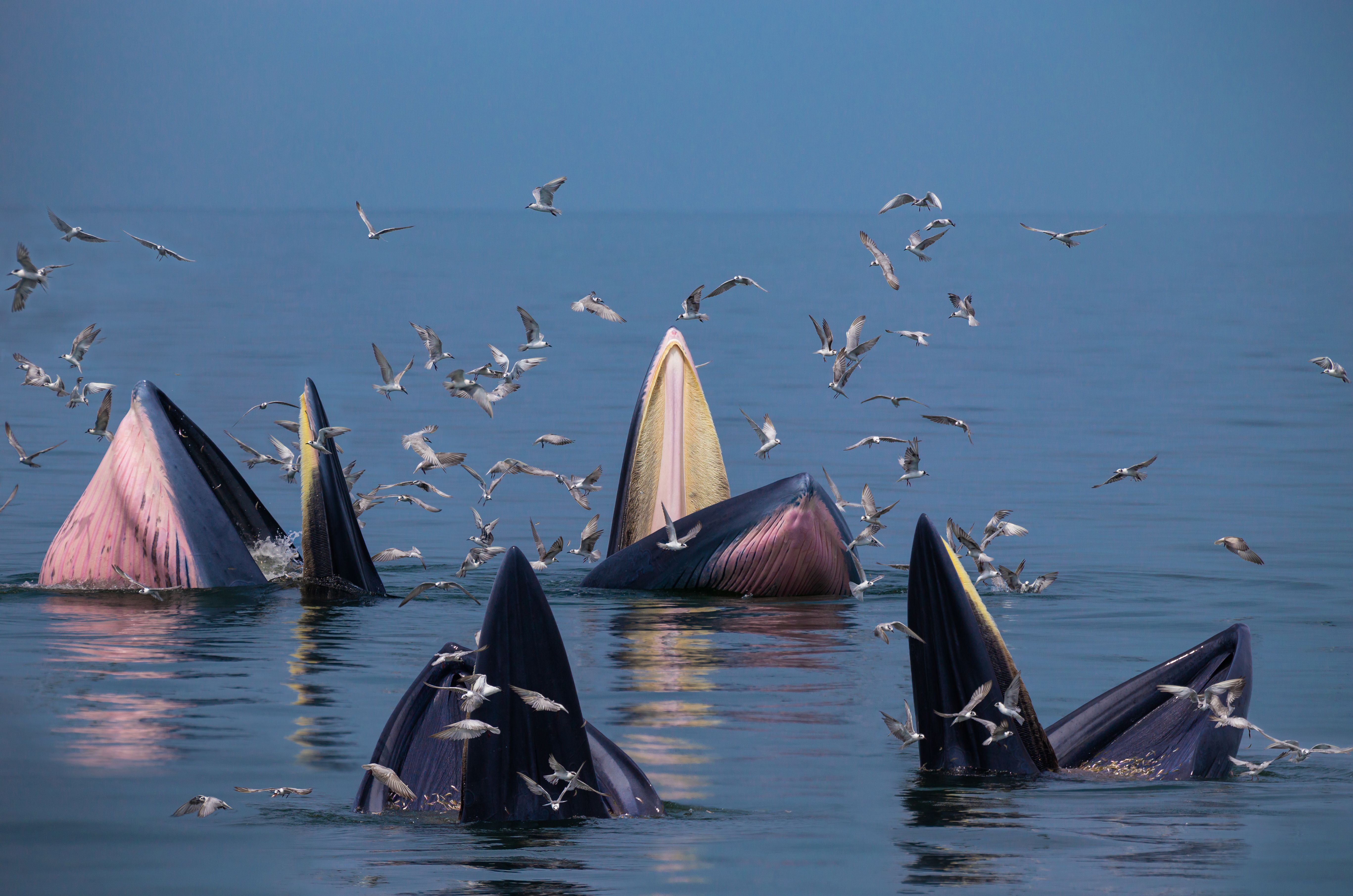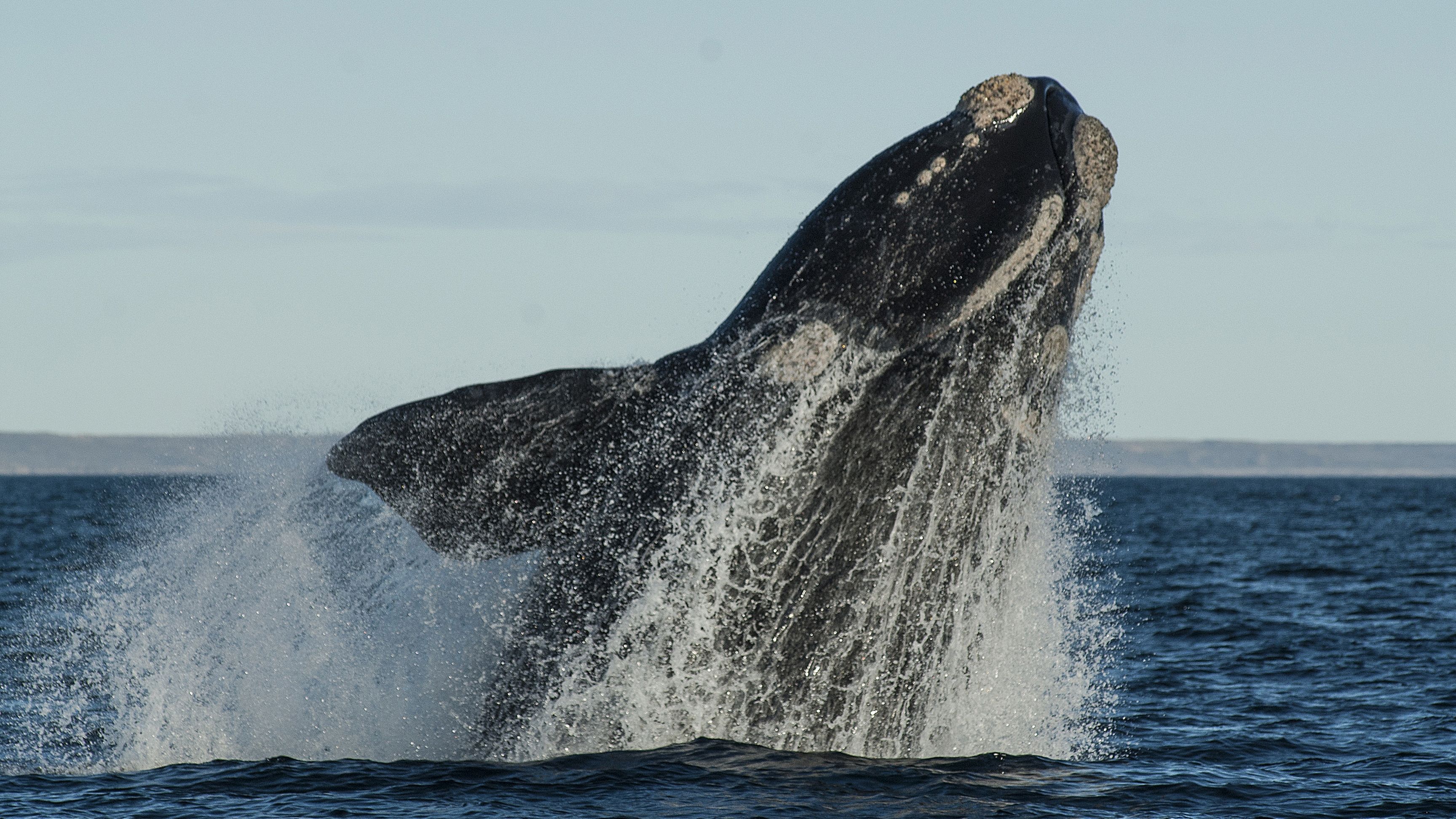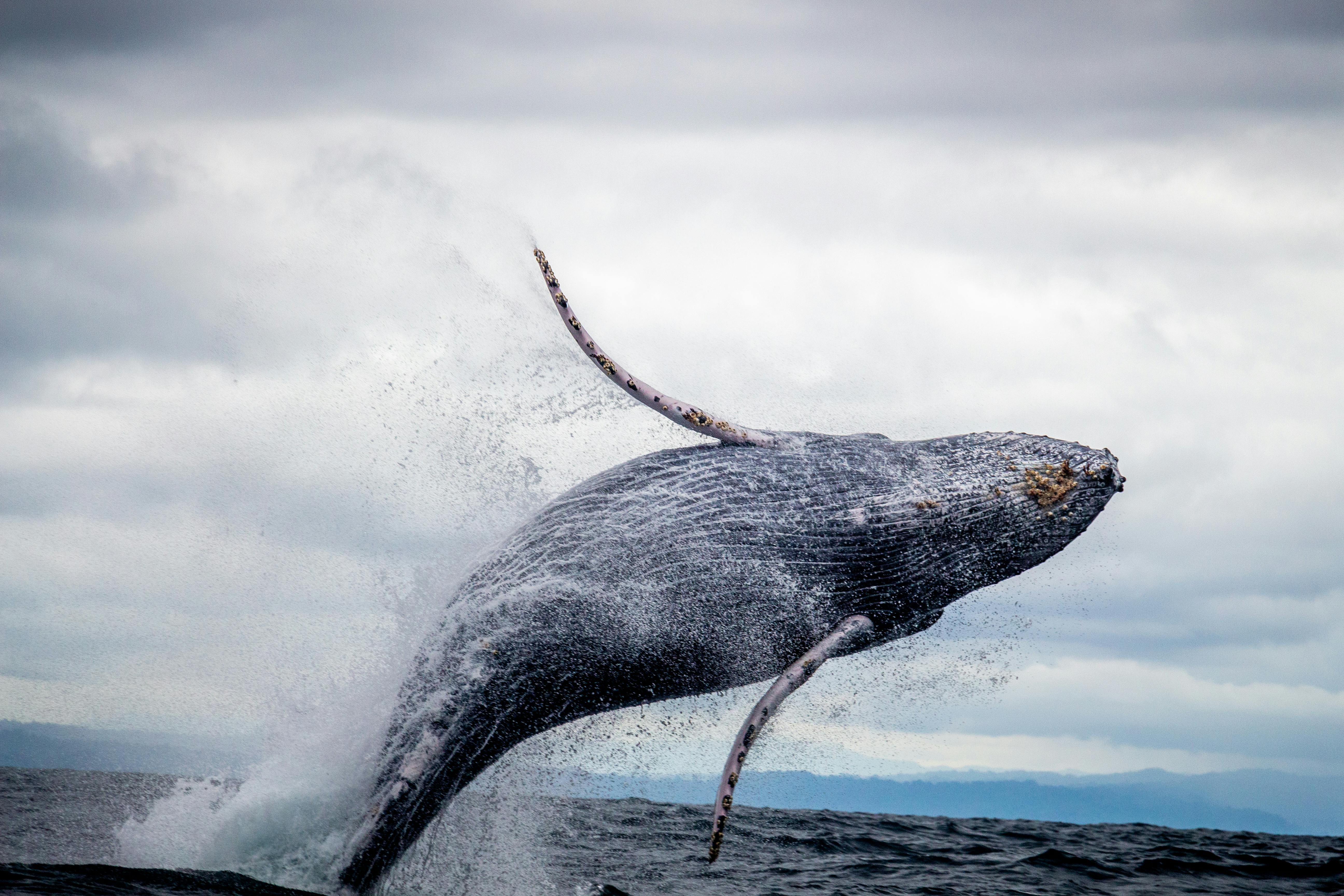Whales are lovely creatures and are vital in keeping our oceans healthy. The mysterious sands of Pakistan have lengthy protected a major milestone in whale evolutionary understanding. However because of Philip Gingerich and his analysis group, unusual mammal fossils have been found within the early Nineteen Eighties.
The fossil proof, furry and four-footed, was shortly acknowledged as a 50-million-year-old cetacean ancestor. Pakicetus, because it was named, possessed a novel mix of traits that astonishingly bridged the hole between terrestrial mammals and trendy whales.
Not like the highly effective streamlined our bodies of as we speak’s whales, Pakicetus was a goat-sized creature resembling a peculiar hybrid of a canine and rodent. It had massive ft and tiny hind legs, disproportionate to its 100 lb measurement. However as soon as understood, this stunning hyperlink rewrote the evolutionary saga of recent whales.

Associated
Where & When To See The Great Blue Whale Migration In San Diego
Vacationers could have the very best time on their San Diego journey watching blue whales migrating. This is how and the place to see the blue whales and a few suggestions.
Whales Have An Attention-grabbing Ancestor From The Sands Of Pakistan
An enormous asteroid in Earth’s historical past paved the way in which for probably the most attention-grabbing evolutionary pathways from furry canine to ginormous cetacean
Whales, the majestic giants of the ocean, have a captivating evolutionary historical past that traces again to a standard forebear, distinctive land-dwelling ancestors with brief legs. One of many pivotal figures on this evolutionary journey is Pakicetus. This creature lived on the Indian Subcontinent 50 million years in the past (throughout the early Eocene epoch), simply after the nice dinosaurs’ extinction.
Opposite to the whales we’re conversant in as we speak, Pakicetus (Pakicetus inachus) was a small land animal, a quadruped resembling a mix of a canine and a big mole, with an enormous snout, and coated in fur. It inhabited the luxurious river and freshwater areas in what’s now Pakistan.
As a transitional species, Pakicetus was a mishmash of terrestrial and aquatic options. The fossil document reveals it had limbs tailored for strolling and a cranium construction that might finally accommodate the superb listening to and echolocation talents of recent sperm whales, humpback whales, and the most important cetaceans, blue whales.
Echolocation is even found in the newest whale species, which can be a descendant of Pakicetus. These options mixed to guard ancient whales from some of their scariest predators.
Scientific Title of Early Whale Ancestor
|
Class |
Mammalia |
|---|---|
|
Infraoder |
Cetacea |
|
Household |
Pakicetidae |
|
Genus |
Pakicetus |
4 completely different species of Pakicetus, the widespread ancestor to toothed whales, have been present in Pakistan, together with:
- Pakicetus inachus
- Pakicetus attochi
- Pakicetus calcius
- Pakicetus chittas
By way of evolution and adaptation over thousands and thousands of years, it’s simple to know how small animals started exploiting aquatic environments, finally giving rise to the various group of marine mammals we see as we speak.

Associated
AI Helps Scientists Track Whales That Make A Unique Sound
AI helps observe whales that sing with a twang that might make the very best nation singer envious.
A Deeper Look At The 4-legged Precursor To The Fashionable Whale
A pointy-toothed, furry mammal that prided itself as an opportunistic carnivore that hunted on each land and underwater
Cute however unusual describes Pakicetus completely! An early ancestor of recent whales, it developed a fascinating array of physical traits tailored to its semiaquatic way of life. Pakicetus was a mammal in regards to the measurement of a contemporary goat. Its sturdy, elongated physique was coated with a fur coat, which helped it keep heat.
Not like later whale species, its limbs possessed 4 useful legs, enabling it to stroll on land. These paws, fitted to terrestrial motion, additionally hinted at their capabilities in shallow waters, performing as paddles whereas swimming.
Pakicetus’ cranium, that includes sharp, sturdy tooth, was tailored for an opportunistic carnivorous food plan. Fortunately, its evolutionary timeline omitted kayaking humans from becoming a whale’s diet. A thick bony wall across the center ear foreshadowed diversifications for semiaquatic life.
Pakicetus embodied a outstanding evolutionary stage between land-dwelling mammals and totally aquatic whales.

Associated
Whales Live Much Longer Than We Thought, According To A New Study
A brand new examine means that proper whales truly reside twice so long as analysis beforehand decided.
The Wonderful Pakicetus: Remodeling From A Furry Rat To A Swish Whale
No, whales didn’t evolve from the hippopotamus, however they’re distant cousins; each are sleek and highly effective marine animals in and below the water
Blue whale, leaping within the air, descendant of Pakicetus, land animal.
The transition of whales from land to water concerned outstanding diversifications that occurred over thousands and thousands of years. The pursuit of recent meals sources drove these diversifications. Pakicetus remained within the water as an ambush predator, ready for its prey.
Hiding within the water was additionally an efficient escape from terrestrial predators equivalent to:
- Crocodiles
- Plesiosaurs
- Early bears
Initially, these early cetaceans exhibited options appropriate for a terrestrial way of life. Nevertheless, as they ventured into aquatic habitats, their our bodies underwent vital adjustments by pure choice. Limbs advanced into flippers, enhancing swimming means, whereas the lengthy tail tailored into a robust fluke (the horizontal extensions in a tail fin) to help in propulsion. The physique is elongated and streamlined, lowering water resistance and permitting the fashionable whales to hurry and maneuver in deep oceans.
One other distinctive cranial adaptation was the gradual migration of the mammalian nostrils to the highest of the top over time. This finally shaped the whale’s signature blowhole, enabling it to breathe on the water’s floor. Main adjustments additionally occurred internally; as an illustration, their auditory system tailored to detect sounds underwater by echolocation, essential for long-range communication and navigation.
This suite of diversifications marks a rare evolutionary journey of pure choice, reflecting life’s flexibility and resilience because it adapts to new environments and challenges.
In accordance with the fossil document, the wolf-like mammal grew to roughly six ft and 7 inches lengthy.
The weird however fascinating Pakicetus upended pure historical past and whale biology. By bridging the hole between historical terrestrial creatures and modern marine giants, these early whales highlighted the gradual evolutionary adjustments that reworked a gaggle of land mammals into aquatic behemoths.




Recent Comments